A home bread maker is a great investment if you tire of stale supermarket loaves or you live in the middle of the countryside with no decent bakers in the vicinity. It’s also a brilliant – and safe – way to avoid allergens because you can monitor what goes into the loaf yourself and not have to rely on a hard-to-read ingredients label.
When it comes to home bread makers, Panasonic is the brand name that always pops up first, probably because they invented it but also because its bread-making appliances are constantly raved about by all and sundry. The SD-YR2540 is the company’s flagship model and is the one to opt for if you want access to the widest variety of breads including a range of gluten-free options.
Let’s take a closer look.
Panasonic SD-YR2540: price and availability
Live in the UK? Try Amazon where the Panasonic SD-YR2540 is shifting for a very reasonable £202 (£38 off the recommended retail price). Alternatively head for John Lewis & Partners or Argos where it’s selling for the usual £239.99.
For some unfathomable reason, Panasonic isn’t as ubiquitous a bread-maker brand in the USA as it is in the UK and Europe. In fact, as far as we can tell, the SD-YR2540 isn’t available at all in the US but you can chose from a range of other Panasonic models at Amazon.
For the Australian market we have managed to source a Panasonic SD-YR2550SST which has one less bread-making function than the model reviewed here. You can snap it up at Appliances Online for A$294.
Panasonic SD-YR2540 review: design
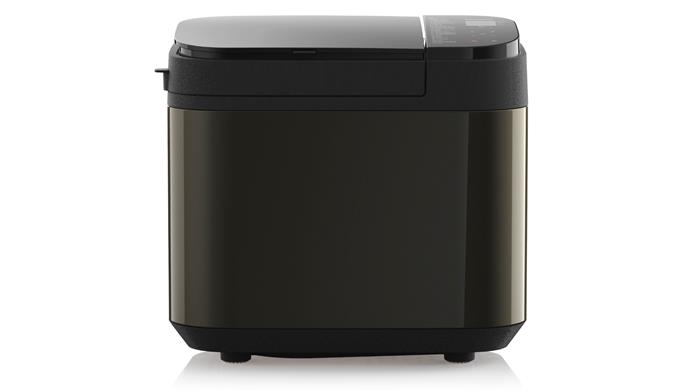
(Image credit: Panasonic)
With the lid closed, the SD-YR2540 measures 408 x 252 x 362mm so, while it is quite large in stature, it’s also an appliance that can be stored in most full-size kitchen cupboards. Available in any colour as long as it’s dark grey, the Panasonic’s styling is pretty bland but then that can be a good thing because no one will notice it if left out on the worktop.
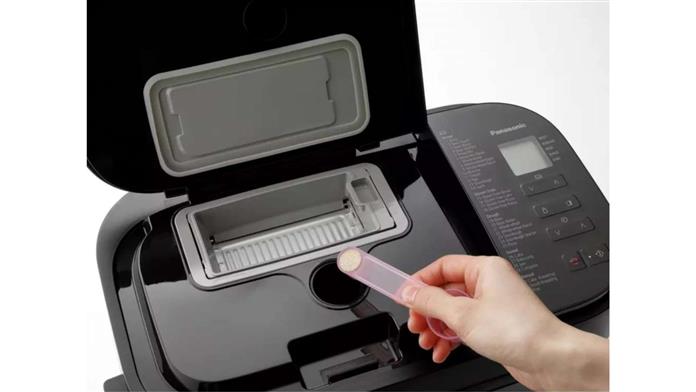
The Panasonic SD-YR2540 features a separate hatch for extra ingredients like nuts and raisins, plus a unique yeast dispenser
(Image credit: Panasonic)
Heading above, the lid is divided into two sections, one on top of the other. The main lid is accessed to the side and is used for loading the main ingredients like bread mix and water, while a smaller one above it is used for loading extra ingredients like raisins, nuts and seeds. The small automatic dispenser for the yeast is a big bonus – and unique to Panasonic – since other bread makers require the yeast to be sprinkled on top of the flour without it making direct contact with the water.
Panasonic SD-YR2540 review: features
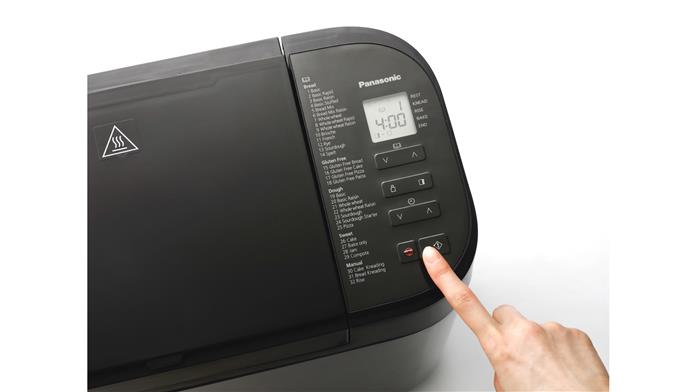
The Panasonic SD-YR2540 comes with 32 programs for a variety of breads
(Image credit: Panasonic)
Panasonic has designed this bread maker to meet the demands of a huge variety of recipes and accordingly it has 32 automatic programs on board which are in turn divided into five submenus. I won’t go into the full list because you may nod off, but here’s a taster…
Under the main ‘Bread’ menu you have a choice of basic white, wholewheat, raisin, brioche, French, sourdough, spelt and rye. Aside from standard GF bread, the ‘Gluten Free’ option also produces cake, pizza dough and pasta. Then there’s the ‘Dough’-only setting which provides seven styles from basic and wholewheat to sourdough and pizza. The final ‘Manual’ setting takes care of pre-baking tasks like bread and cake kneading and proofing. All settings are accessed via a pair of up-and-down chevron keys positioned just below the small but perfectly readable LCD screen. Oh, and there’s also an additional key for selecting one’s preferred crust colour, from light to dark.
Granted, it’s not the easiest interface to get a handle on – the Sage Custom Loaf is much more intuitive – but it’s nothing a spot of manual reading won’t solve.
Panasonic SD-YR2540 review: how it works
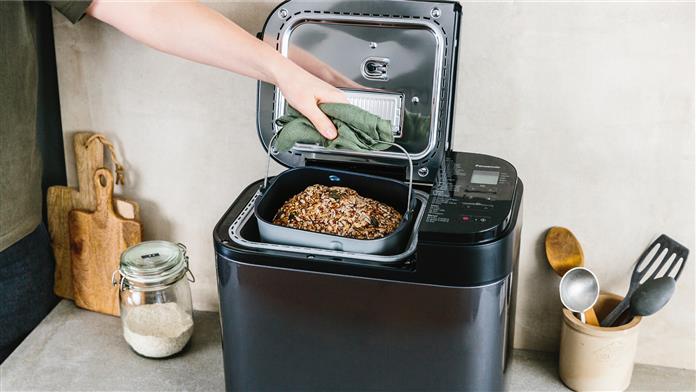
(Image credit: Panasonic)
Like most bread makers, baking bread in the SD-YR2540 is as easy as boiling a kettle. No kidding. Of course you can create you own specialist dough using ingredients of your choosing which might be a bit more involved but, for the sake of my tests, I opted for a variety of pre-packaged bread mixes and the most basic bread-type settings. The process using bread mix couldn’t be easier. Simply dump the mix into the non-stick baking pot which is good for up to a 600g loaf and add some butter if it’s required. Then pour in the recommended volume of water and select a bread option – basic white, basic wholewheat, etc – and your preferred level of browning (I would suggest the darkest setting). That’s it.
It takes about 30 minutes for the machine to warm the ingredients to room temperature at which point it starts kneading the dough using a small paddle that supposedly replicates the kneading technique of an artisan baker. After about 30 minutes of kneading, it moves to the proofing sequence which lasts for up to 2 hours 20 minutes depending on the amount of flour used. It then starts the baking process which continues for up to 55 minutes. The entire process takes about four hours to complete and, as with most bread machines bar the Sage Custom Loaf, the paddle’s action leaves a hole in the bottom of the loaf. It’s not the end of the world but it does mean that at least two slices will have gaps in the bottom edge.
Panasonic SD-YR2540 review: performance
I’ll be honest and say that I didn’t try baking a cake, partly because I watched a couple of YouTube videos that didn’t impress me enough to want to waste time trying it. However, I did try several different loaves mostly using a variety of proprietary bread mixes. For my first attempt I tried Francine Pain Rustique Aux Céréales but was disappointed by the anaemic colour and scruffy texture of the crust and, to some degree, the stodgy texture and flavour of the bread itself.
For my second experiment I gave the much cheaper Waitrose Wholemeal Bread Mix a go and the results were much better – a darker, shinier crust with a light, fluffy centre. Then I tried the Bacheldre Rustic Crunch Bread Mix and had the best results of all. The crust was superb and the bread itself was full of malty flavour. Bizarrely, at no point during any of these baking sessions did I notice any scent of freshly baked bread wafting around the home.
Truth is, you could save money and forgo a machine like this and do all the kneading and proofing yourself before bunging the dough in the oven. You would likely get even better crust results. But who has time these days to knead bread every day or two and wait for it to prove? I for one would tire of the whole process very quickly. However, if you have a machine like this in the home you would likely use it on a regular basis and not have it confined to a cupboard along with the ice cream maker. The fact this Panasonic makes such a wide variety of breads, including gluten-free options, with such ease is testament to the brand’s huge success in this arena.
Panasonic SD-YR2540 review: verdict
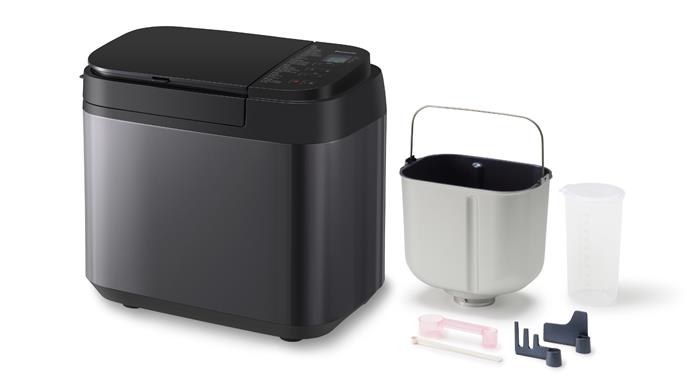
(Image credit: Panasonic)
First and foremost, the Panasonic SD-YR2540 is generally very easy to use. From a simple pile of loose ingredients, it somehow manages to create a variety of complete loaves with zero effort. So if you’re cheesed off by stale supermarket bread, don’t have a bakery in the vicinity or struggle to find gluten-free bread, the Panasonic is a very worthwhile investment that won’t sit in a cupboard gathering dust.
